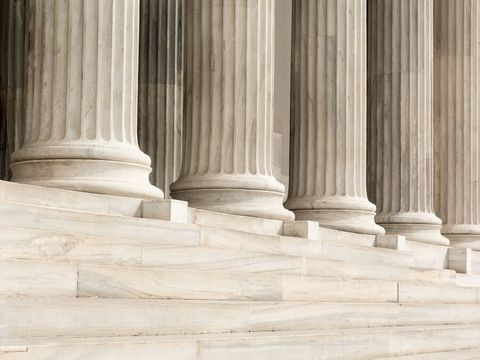DoD Expands Restrictions on Supply Chain for Certain Magnets, Tantalum, and Tungsten
Client Alert | 2 min read | 06.21.24
On May 30, 2024, the Department of Defense (DoD) issued a final rule implementing Section 844 of the Fiscal Year (FY) 2021 National Defense Authorization Act (NDAA) and Section 854 of the FY 2024 NDAA by amending DFARS 225.7018-2 and accompanying DFARS clause 252.225-7052, which restrict DoD from acquiring certain metals and magnets from “covered countries” of Iran, North Korea, Russia, and China, to prohibit even earlier inputs in the supply chain from occurring in these countries. Despite comments discussing the infancy of the domestic market for many “covered materials”—defined as samarium-cobalt magnets, tantalum metals and alloys, tungsten metal powder, and tungsten heavy alloy or any finished or semi-finished component containing tungsten heavy alloy—the final rule expands the restrictions on sourcing covered materials from covered countries. Currently, the rule requires that covered materials not be melted or produced in covered countries but, effective January 1, 2027, the updated rule prohibits covered materials being mined, refined, separated, melted or produced in one of the covered countries. The expansion of the focus of the prohibition all the way back to where these materials were mined is consistent with the U.S. government’s effort to develop the domestic industrial base for and encourage on-shoring of critical minerals, magnets, and metals.
In addition, the final rule alters the applicability of the updated rule to commercially-available off-the-shelf (COTS) items, further limiting the COTS exception. COTS items are exempt from the current prohibition unless they are 50% or more tungsten by weight. Effective January 1, 2027, COTS items will be exempt from the updated prohibition unless they are 50% or more covered material (not just tungsten) by weight.
Key Takeaways
Now that the final rule has clarified requirements, companies should consider:
- Reviewing their supply chains for prohibited covered materials and products.
- Identifying alternative sources for compliant products as required, given the expanded scope of the prohibition and the reduced applicability of the COTS exemption.
- Aggregating data to pursue and support a nonavailability determination by the government for a product or class of products if the company anticipates not having compliant product sources by January 1, 2027.
Contacts
Insights
Client Alert | 5 min read | 12.12.25
Eleventh Circuit Hears Argument on False Claims Act Qui Tam Constitutionality
On the morning of December 12, 2025, the Eleventh Circuit heard argument in United States ex rel. Zafirov v. Florida Medical Associates, LLC, et al., No. 24-13581 (11th Cir. 2025). This case concerns the constitutionality of the False Claims Act (FCA) qui tam provisions and a groundbreaking September 2024 opinion in which the United States District Court for the Middle District of Florida held that the FCA’s qui tam provisions were unconstitutional under Article II. See United States ex rel. Zafirov v. Fla. Med. Assocs., LLC, 751 F. Supp. 3d 1293 (M.D. Fla. 2024). That decision, penned by District Judge Kathryn Kimball Mizelle, was the first success story for a legal theory that has been gaining steam ever since Justices Thomas, Barrett, and Kavanaugh indicated they would be willing to consider arguments about the constitutionality of the qui tam provisions in U.S. ex rel. Polansky v. Exec. Health Res., 599 U.S. 419 (2023). In her opinion, Judge Mizelle held (1) qui tam relators are officers of the U.S. who must be appointed under the Appointments Clause; and (2) historical practice treating qui tam and similar relators as less than “officers” for constitutional purposes was not enough to save the qui tam provisions from the fundamental Article II infirmity the court identified. That ruling was appealed and, after full briefing, including by the government and a bevy of amici, the litigants stepped up to the plate this morning for oral argument.
Client Alert | 8 min read | 12.11.25
Director Squires Revamps the Workings of the U.S. Patent Office
Client Alert | 8 min read | 12.10.25
Creativity You Can Use: CJEU Clarifies Copyright for Applied Art
Client Alert | 4 min read | 12.10.25
Federal Court Strikes Down Interior Order Suspending Wind Energy Development





